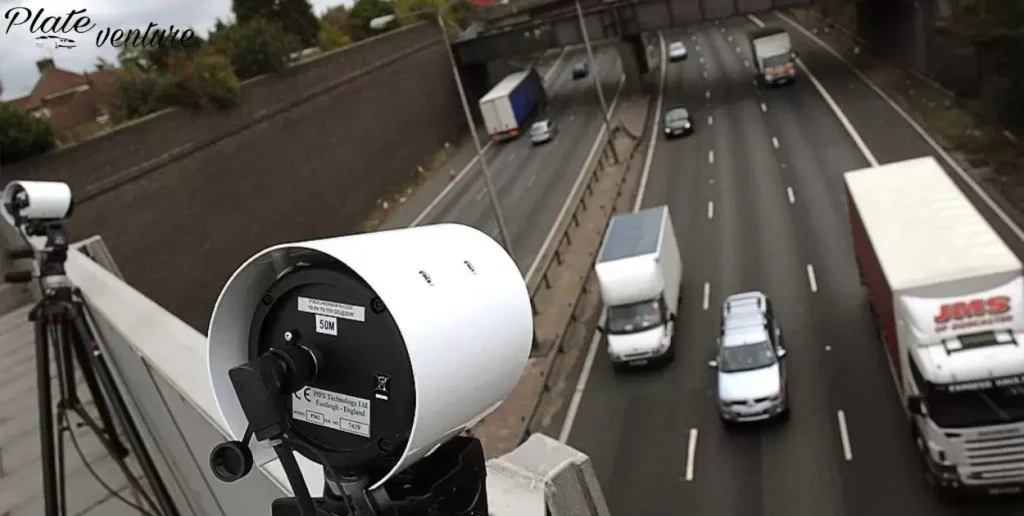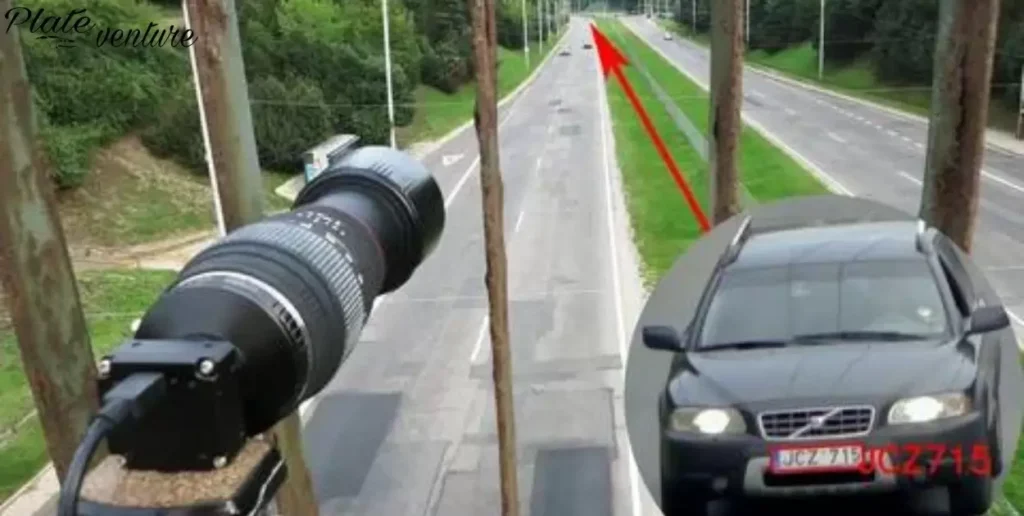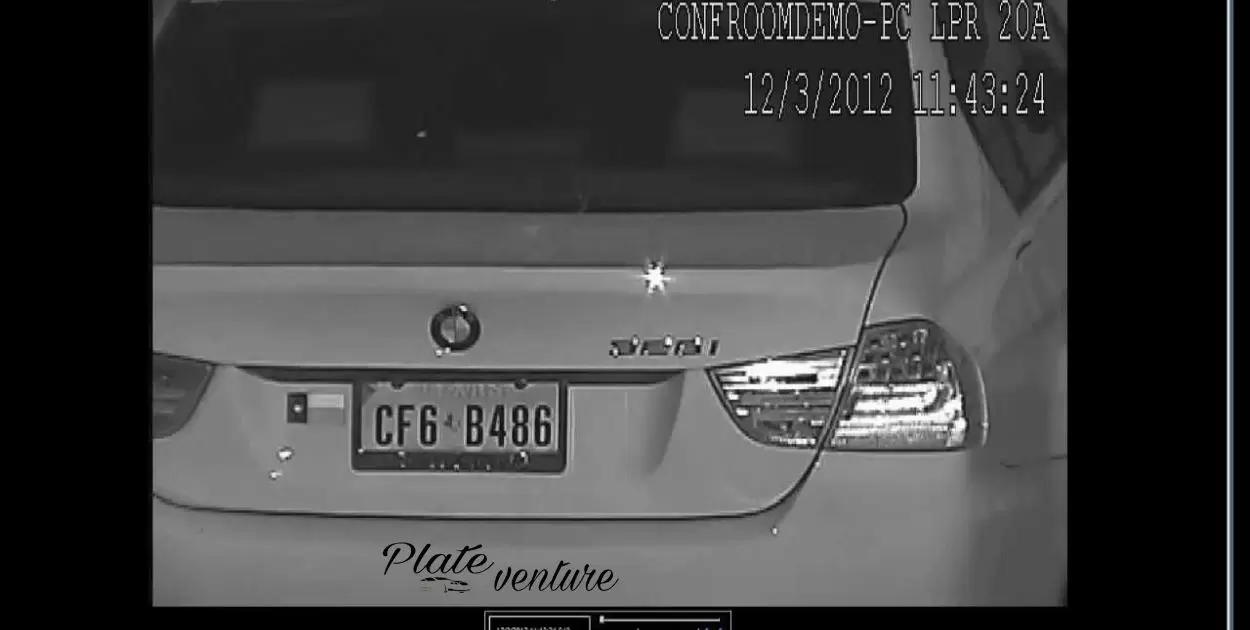Capturing license plates at night refers to the process of using specialized technology, such as infrared cameras or low-light sensors, to record and identify vehicle license plates in low-light conditions. This is essential for enhancing surveillance, security, and law enforcement efforts during nighttime hours.
Discover the secrets of enhancing nighttime surveillance with our guide on “How To Capture License Plates At Night.” Uncover the techniques and tools needed to make your security measures more robust, ensuring a safer environment. Take the first step towards improved surveillance – learn the art of capturing license plates even in the dark!
To capture license plates at night, use high-quality low-light cameras with infrared technology. Adjust camera settings for optimal night vision, and ensure proper positioning and lighting to enhance plate visibility.
Can Security Cameras Read License Plates At Night
Security cameras can read license plates at night using infrared technology. These cameras have specialized sensors that capture clear images in low-light conditions, enabling them to accurately identify license plate numbers. The infrared light emitted by the camera illuminates the area, making it possible to capture sharp and readable images even in the dark.
These cameras play a crucial role in enhancing security and surveillance during nighttime hours. By effectively reading license plates at night, they help law enforcement and businesses monitor and manage traffic, ensuring a safer environment and aiding in various security applications.
Understanding the Importance of Clear License Plate Images

Clear license plate images are crucial for various reasons. Law enforcement relies on these images to identify vehicles involved in crimes quickly. Additionally, accurate plate recognition systems heavily depend on clear images to function effectively, ensuring smooth traffic management.
In everyday life, clear license plate images are essential for parking enforcement and toll collection. Without clarity, these systems may encounter errors, causing inconvenience and delays. Thus, emphasizing the importance of ensuring that license plate images are sharp and easily readable benefits both law enforcement and everyday automated processes.
Choosing the Right Camera for Nighttime Capture
Selecting the perfect camera for capturing license plates at night is crucial. Look for a camera with a high ISO capability to ensure clear images in low-light conditions. Additionally, consider models with infrared technology for enhanced visibility in complete darkness.
When choosing a camera, prioritize those with a wide aperture lens for better light intake. Cameras with built-in night vision features can significantly improve license plate readability at night. Remember, the right camera choice can make a significant difference in nighttime surveillance accuracy and effectiveness.
Optimal Camera Placement for Night Vision
To capture clear license plate images at night, place the camera strategically. Mount it at eye level to the license plate, ensuring a direct line of sight. This placement minimizes glare and enhances the camera’s night vision capabilities.
Consider ambient lighting when choosing the camera location. Avoid positioning it directly under streetlights to prevent overexposure. Optimal camera placement improves night vision performance and ensures accurate license plate recognition.
How Far Away Can A Security Camera Read A License Plate?
Security cameras can read license plates effectively up to about 30 feet away. The camera’s ability to capture clear images is crucial for accurate plate reading. Beyond this range, factors like camera resolution and lighting conditions can affect the camera’s performance.
In optimal conditions, some advanced security cameras equipped with specialized technology can extend the reading range to around 60 feet. However, it’s essential to consider environmental factors and camera specifications when determining the practical reading distance for license plates.
Importance of Adequate Lighting in License Plate Capture
- Enhanced Visibility: Adequate lighting improves the visibility of license plates, allowing security cameras to capture clear and detailed images. This is crucial for accurate identification and monitoring.
- Increased Readability: Proper lighting conditions contribute to better readability of license plates. It helps the camera’s image sensors capture distinct characters, ensuring accurate identification of vehicles.
- Improved Surveillance Accuracy: Adequate lighting enhances the accuracy of license plate capture systems, reducing the chances of errors or misreads. This is especially important for security purposes and law enforcement applications.
- Effective Nighttime Monitoring: Well-lit areas facilitate effective license plate capture during nighttime. Strategic placement of lights ensures that cameras can capture clear images, even in low-light conditions.
- Deterrence of Criminal Activity: Well-lit environments act as a deterrent to criminal activities. Visible and well-captured license plate information can aid in investigations and contribute to overall security measures.
Exploring Infrared Illumination for Enhanced Visibility
Infrared illumination boosts license plate visibility at night. It works by emitting light not visible to the human eye but easily detected by cameras. This technology enhances surveillance and aids law enforcement in identifying vehicles, especially in low-light conditions.
By using infrared illumination, license plate recognition systems become more effective. The emitted light reflects off the license plate, making it stand out in the captured footage. This simple yet powerful technology plays a crucial role in improving security and monitoring on roads during nighttime.
Selecting the Right Camera Settings for Night Photography Of License Plate
For clear night photography of license plates, choose suitable camera settings. Set a wide aperture for more light, like f/2.8. Increase ISO for better sensitivity, and keep the shutter speed fast to avoid blurriness.
Additionally, use manual focus to ensure sharpness. Adjust white balance to prevent color distortions. Experiment with settings to find the perfect balance for capturing license plates at night.
Using High-Resolution Cameras for Detailed Images For License Plate

High-resolution cameras capture incredibly detailed images. These cameras boast advanced technology, providing clarity and precision in every shot. Photographers and professionals rely on them to enhance their work, ensuring every detail is vividly portrayed.
These cameras excel in various fields, from photography to medical imaging. They empower users to zoom in on intricate details, making them indispensable tools in fields where precision matters. With high-resolution cameras, the world comes into sharper focus, enabling a deeper understanding and appreciation of the finer aspects of our surroundings.
Consideration of Weather Conditions in Nighttime Capture
When capturing license plates at night, it’s crucial to consider weather conditions. Clear skies enhance visibility, ensuring accurate readings. Rain or fog may obstruct the camera’s view, affecting the license plate recognition system’s performance. Therefore, monitoring and adapting to weather conditions are essential for optimal results.
Plays a pivotal role in nighttime license plate capture. Unfavorable conditions, like heavy rain or thick fog, can hinder the camera’s ability to read license plates accurately. Choosing appropriate technology and adjusting settings based on real-time weather updates enhance the system’s effectiveness, ensuring reliable data capture even during challenging weather situations.
Maintaining a Proper Maintenance Routine for Cameras
Regularly maintaining cameras that capture license plates is crucial. Perform routine checks to ensure lenses stay clean, preventing blurry images. Regularly inspecting and cleaning equipment keeps the license plate capture system in optimal working condition.
A proper maintenance routine enhances the longevity and efficiency of license plate cameras. Schedule regular inspections for wear and tear, addressing any issues promptly. Timely maintenance ensures reliable performance and accurate data capture, promoting the overall effectiveness of the surveillance system. Whether for security or when You Play The License Plate Game, a well-maintained system ensures optimal functionality.
Installation of License Plate Recognition (LPR) Software
When installing License Plate Recognition (LPR) software, users actively configure the system settings for optimal performance. Users choose suitable hardware and input key parameters, ensuring accurate license plate identification.
The installation process involves straightforward steps, including downloading the software, inputting necessary details, and adjusting preferences. Users actively engage in these tasks to customize the LPR system according to their specific needs, facilitating efficient and effective license plate recognition.
Cctv Camera That Can Read Number Plates At Night
A CCTV camera that reads number plates at night provides enhanced security. This technology uses infrared illumination, allowing clear visibility in low-light conditions. The camera captures license plate information accurately, aiding in effective surveillance and identification, making it a valuable tool for nighttime security applications.
The functionality of a CCTV camera that reads number plates at night relies on its ability to use infrared light to illuminate and capture clear images. This feature ensures that the camera can operate efficiently in low-light settings, enabling reliable identification of vehicles even during nighttime hours.
Integration with Surveillance Systems for Real-Time Monitoring
Integrate your license plate recognition system with surveillance systems for instant monitoring. This connection allows for real-time tracking of vehicles, enhancing overall security. By linking these systems, you actively monitor license plates, ensuring a swift response to any potential security concerns.
Real-time monitoring of license plates becomes seamless through integration with surveillance systems. This approach ensures immediate detection and response to suspicious activities. Connect your license plate recognition technology directly to surveillance infrastructure for an effective and proactive security solution.
Implementing Motion Detection for Efficient Operation
To enhance license plate operations, consider implementing motion detection. Motion detection technology allows the system to activate only when movement is detected, conserving energy and resources. This efficient approach ensures that the license plate recognition system operates dynamically, responding specifically to relevant activity.
When incorporating motion detection for license plate operations, focus on optimizing efficiency. By utilizing motion detection, the system becomes more responsive, activating only when necessary. This not only conserves power but also streamlines the overall operation, making the license plate recognition process more effective and resource-efficient.
Ensuring Privacy Compliance in License Plate Capture
To comply with privacy regulations in license plate capture, implement measures that prioritize individual rights. Utilize advanced software with built-in anonymization features to protect sensitive information. Regularly audit and update systems to ensure ongoing adherence to privacy standards.
Ensuring privacy compliance in license plate capture involves adopting proactive strategies. Implement encryption protocols to safeguard data during transmission and storage. Additionally, provide clear disclosure about data usage, obtaining consent when necessary, to maintain transparency and uphold privacy regulations.
Choosing Between Fixed and Mobile License Plate Cameras
Here’s a simple table outlining key considerations when choosing between fixed and mobile license plate cameras:
| Consideration | Fixed License Plate Cameras | Mobile License Plate Cameras |
| Installation | Installed at fixed locations | Portable, can be moved as needed |
| Flexibility | Limited mobility | High mobility, adaptable to change |
| Coverage Area | Fixed coverage area | Versatile coverage area |
| Cost | Generally lower upfront cost | Potentially higher upfront cost |
| Maintenance | Typically lower maintenance | May require more frequent checks |
| Use Cases | Ideal for fixed entry/exit points | Suitable for surveillance on the go |
| Adaptability to Environment | May be challenging to adapt to changing landscapes | Offers flexibility in diverse environments |
| Response Time | Quick identification within fixed range | May require repositioning for optimal identification |
| Scalability | Scalable for multiple fixed locations | Suitable for dynamic, changing scenarios |
This table provides a snapshot of factors to consider when deciding between fixed and mobile license plate cameras, helping users make informed choices based on their specific needs.
Enhancing Image Processing Techniques for Night Capture
Improving image processing techniques is crucial for effective nighttime license plate capture. Active engagement in enhancing algorithms and software allows for better recognition in low-light conditions. Upgrading these methods ensures sharper images and more accurate identification of license plates during the night.
By actively refining image processing techniques, we optimize the performance of license plate capture systems in low-light scenarios. Proactively adjusting algorithms and software settings enhances the clarity of captured images, enabling reliable identification even in challenging nighttime conditions.
Training AI Models for Improved License Plate Recognition
To enhance license plate recognition, AI models require effective training. Engineers input diverse license plate images, teaching the model to identify variations in fonts, colors, and lighting. This active training process sharpens the AI’s ability to accurately recognize license plates in various real-world scenarios.
Improving license plate recognition hinges on actively training AI models. Engineers feed the system with a diverse range of license plate images, helping the model adapt to different fonts, colors, and lighting conditions. This hands-on approach ensures the AI is well-prepared to excel in recognizing license plates across a spectrum of real-world environments.
License Plate Reader Camera For Home
A License Plate Reader Camera for home provides added security by automatically identifying and recording license plate information. This camera actively scans and captures license plates in real-time, serving as a reliable tool for monitoring and enhancing home safety.
Installing a License Plate Reader Camera at home allows residents to keep track of vehicles entering or leaving their property. The camera’s active recognition feature ensures quick and efficient monitoring without relying on manual input, offering a convenient and effective solution for homeowners seeking an extra layer of security.
Addressing Common Challenges in Nighttime Capture
When capturing license plates at night, it’s important to address common challenges. Poor lighting can be a hurdle, so using infrared technology enhances visibility. Additionally, minimizing glare from headlights or streetlights improves the accuracy of nighttime license plate capture.
Dealing with challenges in nighttime license plate capture involves practical solutions. Ensuring proper maintenance of lighting systems and using glare-reducing filters on cameras helps overcome common issues. By actively addressing these challenges, the effectiveness of license plate recognition systems during nighttime operations is significantly improved.
Regular Testing and Calibration of Equipment
Regularly test and calibrate license plate recognition equipment to maintain accuracy. Testing ensures the system functions optimally, capturing plates with precision. Calibration fine-tunes the equipment, preventing errors and ensuring reliable performance over time.
Consistent testing and calibration are vital for license plate recognition equipment. Regular checks guarantee that the system remains accurate and reliable, reducing the risk of errors. By proactively maintaining and calibrating the equipment, you enhance its longevity and effectiveness in accurately capturing license plate data.
License Plate Recognition Camera Price
The cost of a license plate recognition camera depends on different factors. Features like high resolution, night vision, and weather resistance can increase the price. To find an affordable option, compare prices and consider your specific surveillance needs.
License plate recognition camera prices vary based on features. Cameras with advanced capabilities, such as infrared technology or integrated software, may come with a higher price tag. To make a budget-friendly choice, evaluate your requirements and explore options that offer a balance between features and cost.
Future Trends in Nighttime License Plate Capture Technology
Nighttime license plate capture technology is advancing rapidly. Innovations include enhanced low-light cameras and AI algorithms boosting accuracy. These advancements promise sharper images and quicker identification of plates in low-light conditions.
Infrared and thermal imaging integration show promise for clearer imaging. These developments signify a potential leap in law enforcement and surveillance capabilities, ensuring efficient nighttime identification of vehicles for various applications.
Lorex License Plate Camera

The Lorex License Plate Camera captures clear images of vehicle license plates. It uses high-resolution technology to ensure accurate readings. This camera is efficient in both daylight and low-light conditions, making it reliable for round-the-clock surveillance.
Equipped with advanced software, the Lorex License Plate Camera instantly identifies and stores license plate information. Its easy-to-install design makes it suitable for various locations, enhancing security systems effortlessly. With its ability to detect plates swiftly and accurately, this camera is a valuable asset for monitoring entry points and enhancing overall safety.
Frequently Asked Question
Can CCTV see inside car at night?
Yes, CCTV can see inside a car at night if equipped with infrared or low-light capabilities. These technologies enable cameras to capture clear footage even in darker conditions, allowing surveillance inside vehicles.
What are the camera settings for license plate?
Optimal camera settings for capturing license plates include adjusting focus for clarity, ensuring adequate lighting, and setting a higher shutter speed to reduce motion blur.
What are the steps in license plate detection?
License plate detection involves capturing an image, preprocessing it for clarity, then using algorithms to identify and extract the plate information. The final steps include verifying the plate and processing the data for further use.
Do stealth plates work?
Stealth plates aim to obscure or alter plate characters, but their effectiveness varies. In some cases, they might hinder readability, while others may still identify the plate.
Conclusion
Effectively capturing license plates at night demands a blend of strategic lighting and high-quality imaging technology. The utilization of infrared or low-light cameras ensures optimal visibility in low-light conditions, enhancing the chances of accurate plate recognition.
Implementing these methods maximizes the chances of capturing clear and identifiable license plate data under challenging nighttime circumstances. The key to successful nighttime license plate capture lies in employing specialized camera technologies that cater to low-light environments.
By integrating infrared capabilities or utilizing low-light optimized cameras, the ability to capture sharp and clear license plate images significantly improves, facilitating enhanced recognition and identification even in dimly lit conditions.








